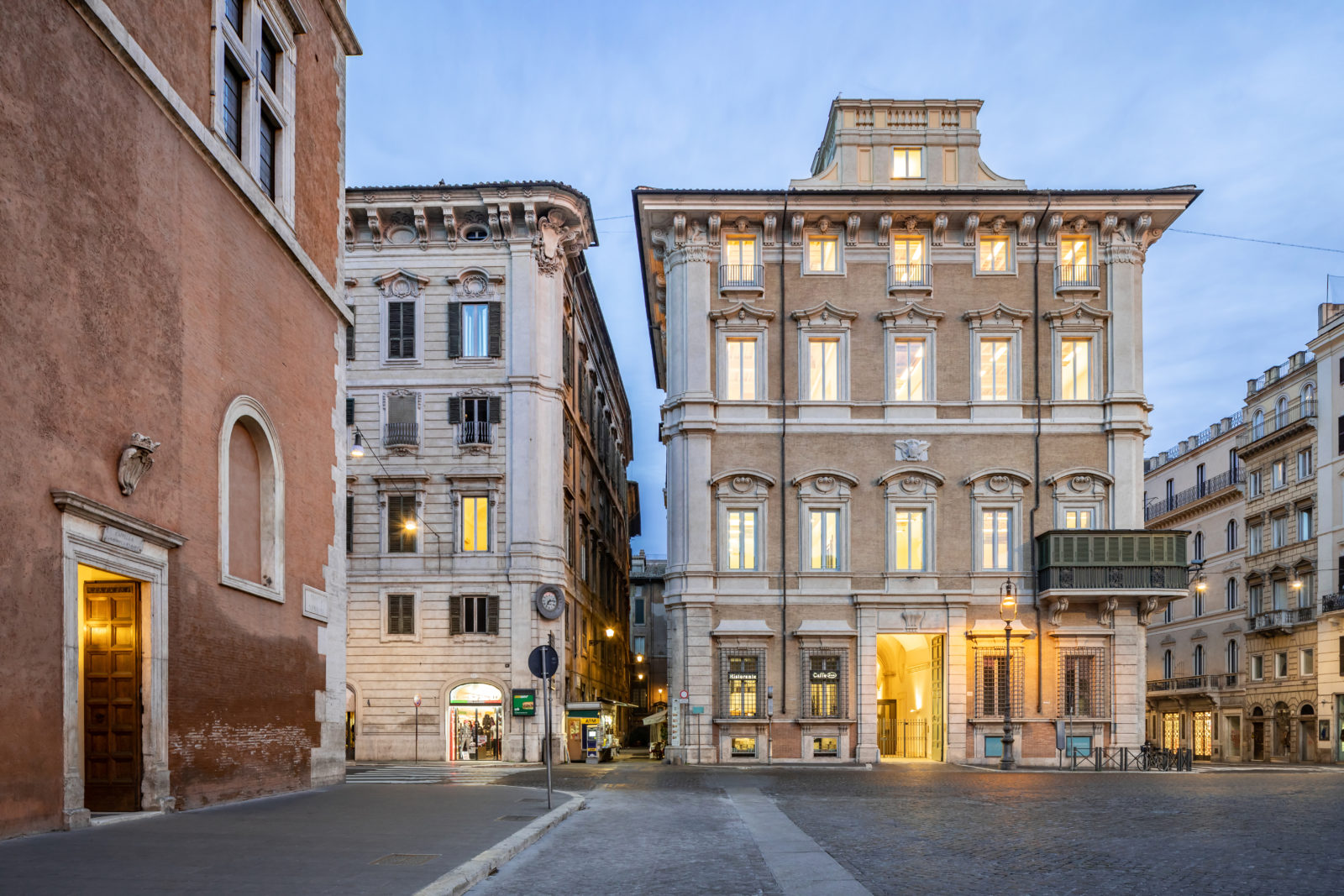With the project Valore Cultura, Generali has established a new cultural hub in the centre of Rome, in front of Piazza Venezia
Open doors at Palazzo Bonaparte. The historic home of Napoleon’s mother has opened its doors, showing itself off to the public on a day that featured free admission. From the early afternoon through midnight on July 9th, over two thousand people crossed the threshold to visit the renovated spaces, meticulously restored by the Real Estate division of Generali, the current owner.
Thanks to the partnership with Arthemisia – a company that produces, organizes and installs art exhibitions – Palazzo Bonaparte is vying to become a new cultural hub for Rome, with temporary exhibitions, starting with the “Secret Impressionists” next October.
The event attracted a vast public who braved the heat of a very humid day to admire the result of the restoration of this building, which had been closed for too long. The inauguration began with a breakfast for Instagram influencers, who acted as spoilers by posting on their accounts the first live images of the palace rooms, using the hashtags #palazzoinmostra and #generalivalorecultura, among others.
Following the institutional ribbon-cutting ceremony attended by the Minister of the Cultural Heritage Alberto Bonisoli and the representatives of Generali Italia and Arthemisia, in the afternoon Romans (and not) came in great numbers, with the line extending past Palazzo Grazioli: the admissions were time-slotted for people waiting to go up to the first floor and immerse themselves in the early nineteenth-century atmospheres, taking back possession of this little-known and forgotten treasure.
I like to cut ribbons especially when we can reclaim such an important building, in a perfect location in Rome, that will enable a significant operation to enhance cultural dissemination
Alberto Bonisoli
About three-thousand square meters of mosaics, frescoes and stuccoes, over three-hundred years old, a small green balcony and an enviable location facing Via del Corso and Piazza Venezia, not yet occupied by the Altare della Patria when Maria Letizia Ramolino, Napoleon’s mother, bought it in 1818. She lived here until her death in 1836. In 1972, it became part of the Generali’s real estate portfolio. The massive restoration project both inside and outside was conducted by Generali Real Estate sgr, with the participation of the Pras studio and the D’Adiutorio company. It began in 2017 and lasted twelve months. Its highlight is the floating glass floor lit by LEDs, which makes it possible to modulate the spaces and move freely from room to room to admire the original mosaics. A mix of modernity and history that is particularly striking in the first room of the second floor where, on the floor backlit by LEDs, stands the plaster model of the statue of Mars Peacemaker that Canova gave as a gift to Bonaparte as a sign of their friendship.
The project to renovate the Palace is part of a greater process – which began in 2016 – to develop the assets of Generali’s portfolio. Valore Cultura is in fact «a project that was conceived with the idea of bringing the artistic and cultural heritage to life with initiatives that foster participation and accessibility» explains Lucia Sciacca, Director of Communication and Sustainability at Generali Italia. Driving the project is «the concrete commitment to the communities. For us this means being life partners to people». These are the words pronounced by Marco Sesana – Country Manager & CEO of Generali Italia and Global Business Lines – to accompany the ribbon-cutting ceremony at the inauguration. «We will bring important art exhibitions, starting with Impressionism – adds Iole Siena, President of the Arthemisia Group. A goal we share with Generali is to open the doors of culture to as many people as possible, certain of the social and human value that derives from the understanding of art».
Save the date for October 6th, for the next ribbon-cutting ceremony to open the exhibition titled “Secret Impressionists”, which will feature over 50 works by artists such as Monet, Renoir, Cézanne, Sisley, Caillebotte and Gauguin, from private collections.
© ALL RIGHTS RESERVED
translation by Olga Barmine





















